
Where am I?
You are at the 'Pop-ups' site, on the north end of the Wainfleet/Port Colborne Quarry, near the town of Port Colborne, Ontario, Canada.
The Paleozoic Platform
Between about 500 million years ago and 350 million years ago, central North America was a low-relief surface located variably at or below sea level. Shallow seas covered the continent and sedimentary rocks were deposited in layers upon the ancient Precambrian basement. This fairly flat-lying stack of rocks is known as the Paleozoic Platform.
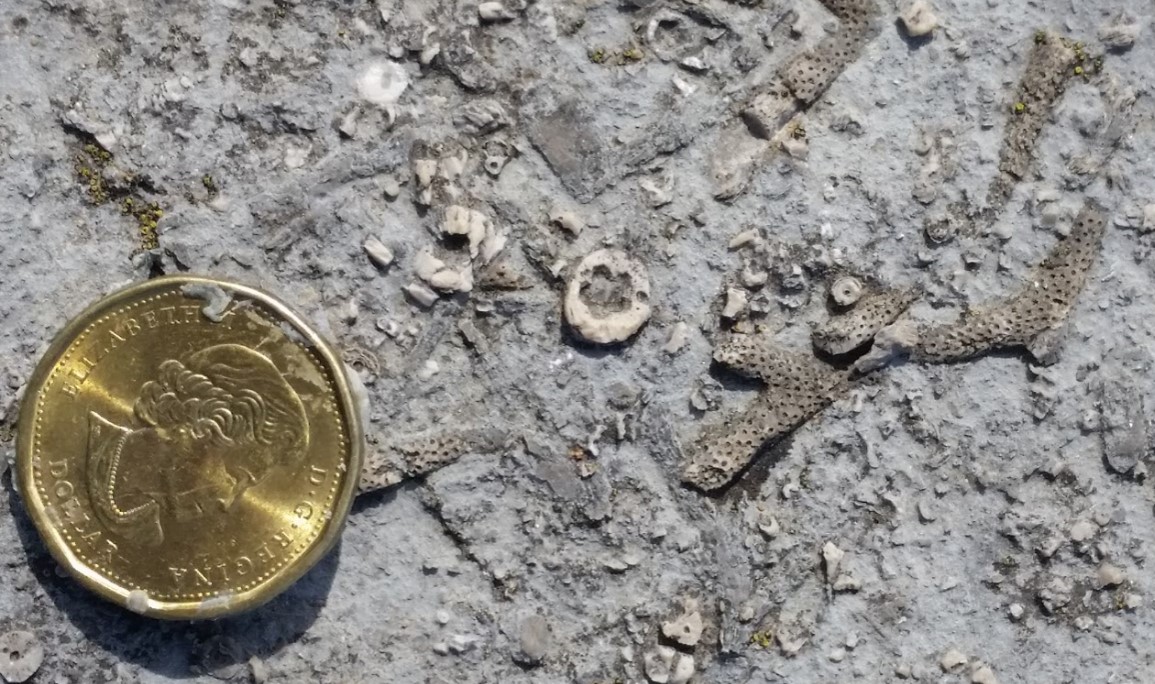
Bryozoans
Bryozoans are known as 'moss animals' for their soft branching appearance in living specimens. They are a highly collonial animal where thousands of individual 'zooids' live in tiny pores visible on delicate stick-like, fan-like, or mound-like structures.
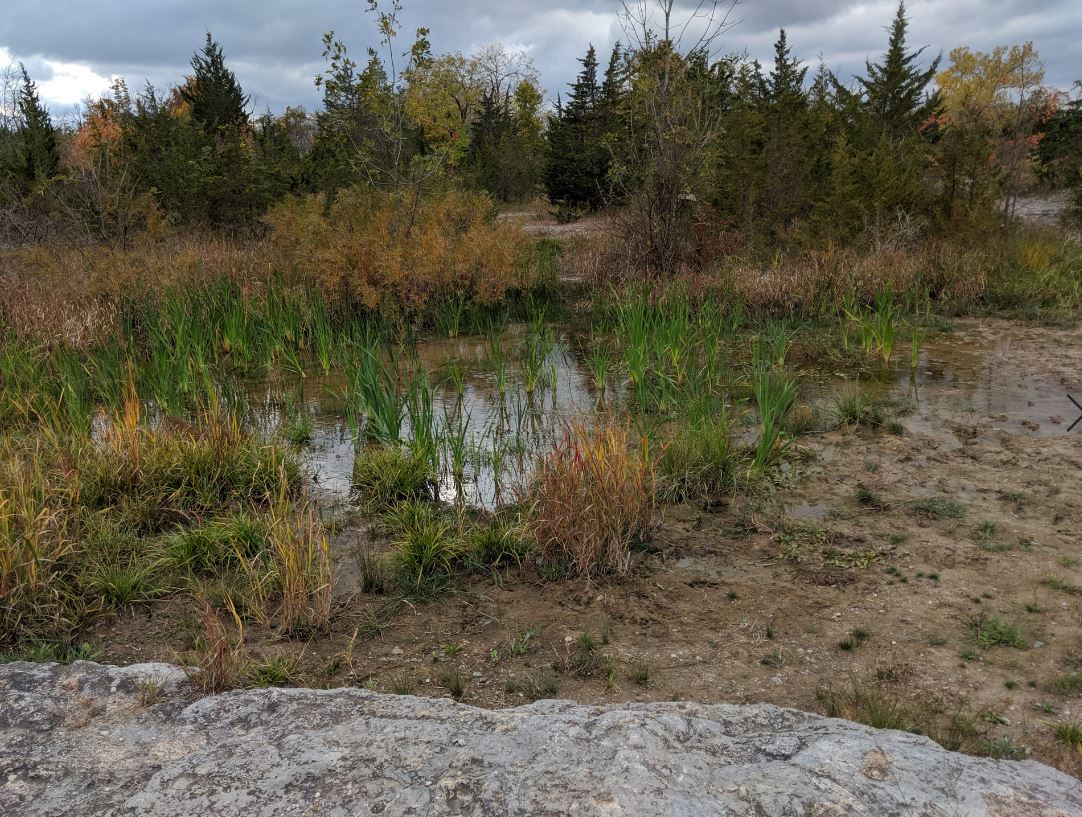
Alvar
Notice how thin the soil is here. The surrounding meadows and forests grow almost directly on the dolostone bedrock. This type of environment is known as 'alvar'. The area is also prone to flooding, and small ponds are common during the wet season.
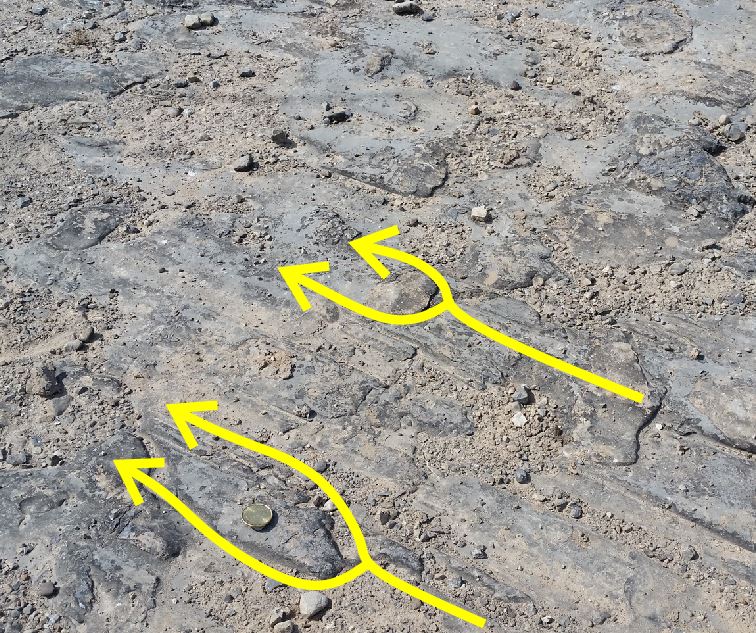
Microdrumlins
Beautiful, and slightly unusual glacial strations are particularly noticeable on the west side of the quarry. While most striations are gouges in a surface, these appear to be raised. At the head of each striation, there is a harder material like a whitish crystallized fossil or dark grey chert nodules which stand proud of the surrounding matrix. These hard bits shetered the area immediately behind them, leaving behind a ridge that clearly indicates the direction of ice flow.

Microdrumlins
Onondaga Formation
The rocks here are part of the Onondaga Formation and are mostly limestone, dolostone, and shale.
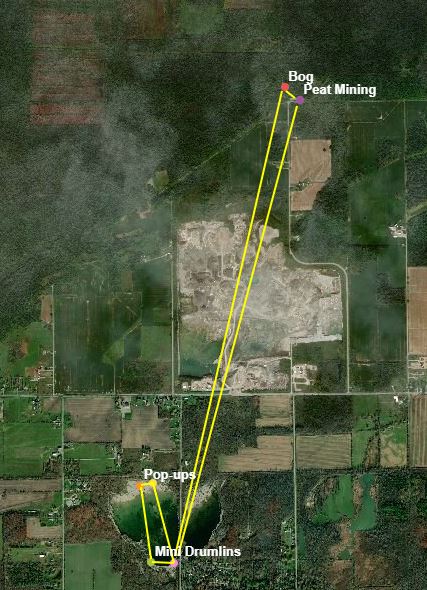
Where am I?
You are at the 'Peat Mining' site at the end of Erie Peat Road near Port Colborne, Ontario.
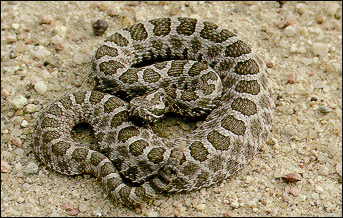
The Massasauga Rattler
A mere 2.5 km northwards at the Wainfleet Bog, there exists an isolated community of the rare Massasauga Rattler Snake. About 40-70 individuals live over an area of only 7 square kilometres. Historically, these were threatened by peat extraction but they are now a protected species.
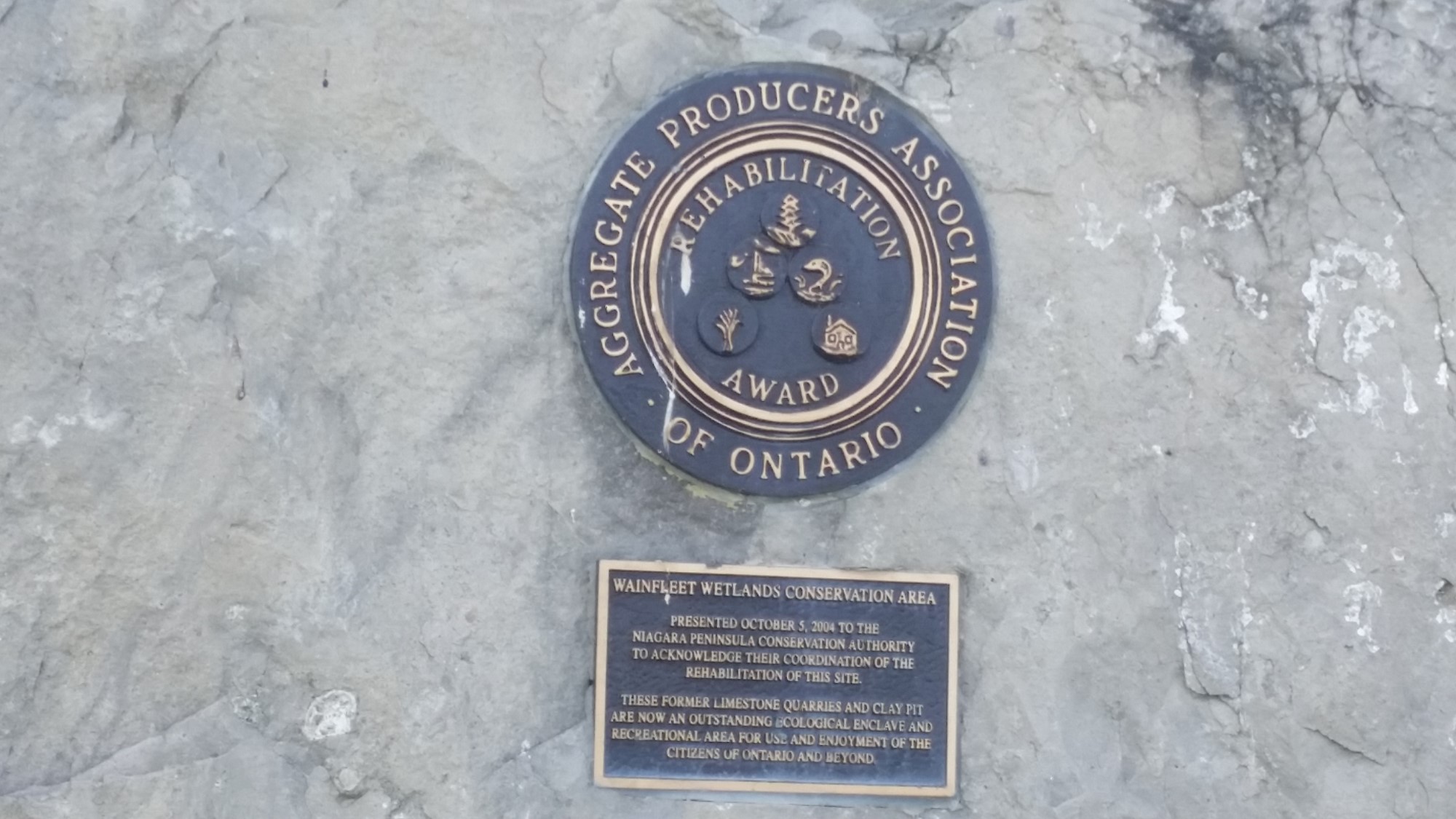
Rehabilitation
Wainfleet Wetlands is an incredible example of reclaimation and the return of natural function following resource extraction. The centre of the quarry has been allowed to fill in with water and develop a thriving wetland ecosystem. Alvar and meadow ecosystems have developed along the top of the quarry where it was once only bare rock. The quarry has even gained function as a recreational environment.
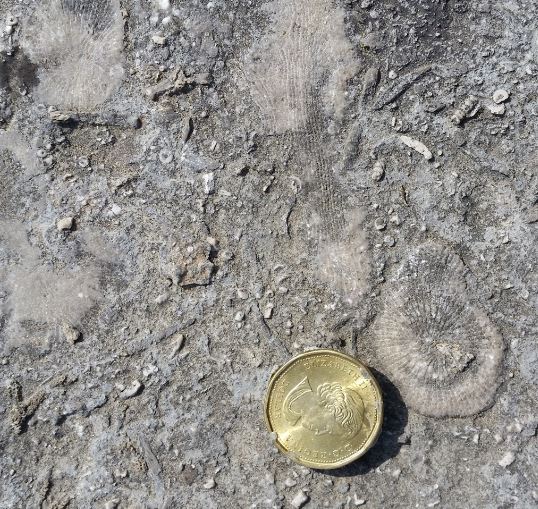
Rugose Corals
Rugose corals are often referred to as 'horn corals' because of their curved conical shape. They are easily recognized by the radiating septa visible when looking at the open end of the coral. Each 'horn' would have only held a single polyp, but it was not unusual for many of these corals to grow in close proximity to each other. These are most likely Heterophrentis.
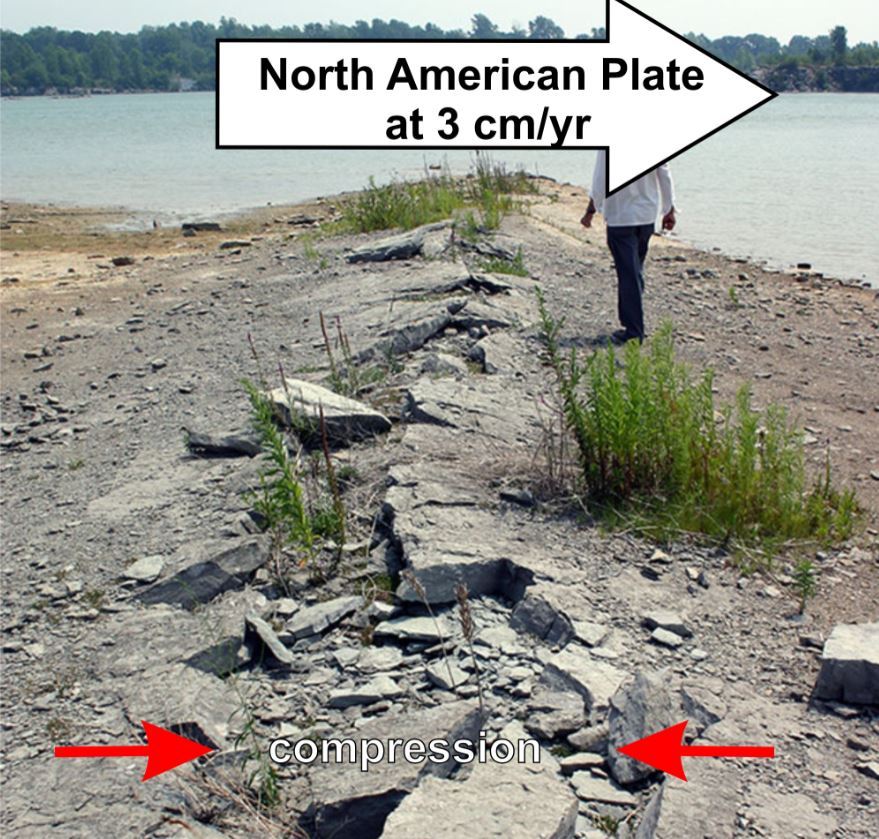
Pop Up Structures
This peculiar ridge in the middle of the quarry floor is a fairly new feature. It is caused by 'neotectonic' compressive stresses essentially wrinkling the strata.
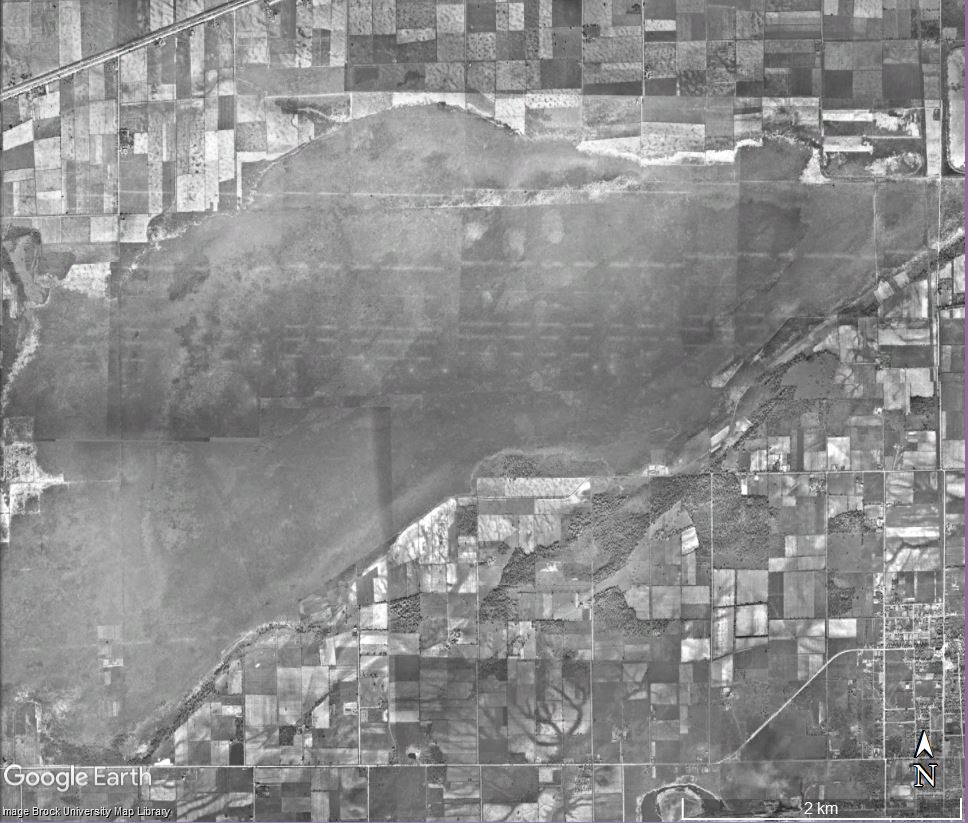
Peat Mining
People use peat in their gardens as a topsoil, and burn it fuel. Mining tends to involve draining the lands and then stripping the peat layer in a process that makes it difficult for new peat to accummulate. The dryer conditions imposed upon a peat-mined area allow woody debris to simply rot. Rehabitliation measures aim to re-hydrate the soil by blocking selected canals and encouraging vegetation regrowth. This aerial photo from 1934 shows the beginning of peat harvesting in the Wainfleet Bog.

Where am I?
You are at the 'Mini Drumlins' site, on the north end of the Wainfleet/Port Colborne Quarry, near the town of Port Colborne, Ontario, Canada.

Peat Harvesting
With European agriculture and peat harvesting operations, the bog experienced a drastic reduction in size.
Aggregate
Aggregates are used in construction to make materials like concrete and asphalt. When natural sources of sand and gravel are not around, it has to be produced by crushing bedrock. The limestone quarry here operated for almost a century.
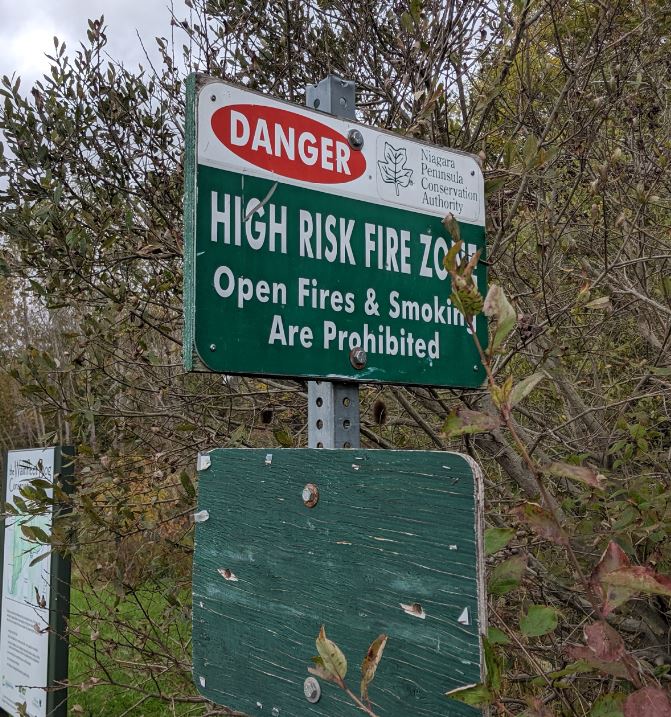
Peat Fires
Peat bogs are at particular risk for fires because like coal, peat moss can burn slowly for a long time. Recent fires inthe Wainfleet Bog smoldered for weeks underground, making them difficult to extinguish.
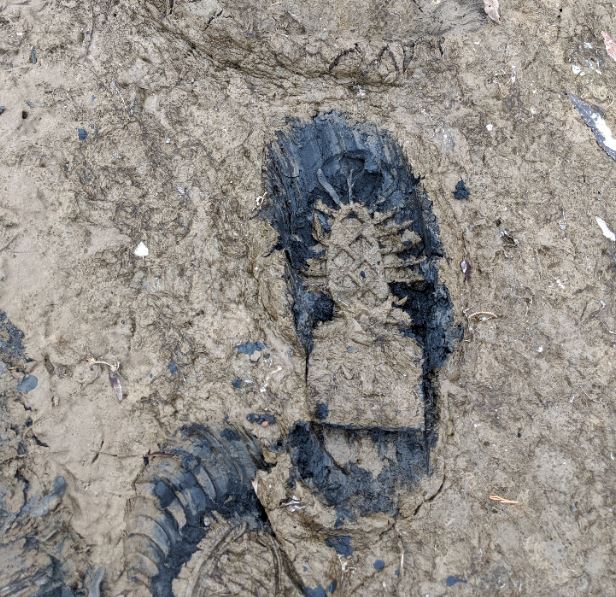
Poor Drainage
The reason that the bog formed here is likely related to the thin, clayey soils which prevented water from draining from this topographic low point. Stagnant waters prevent plant debris from fully decomposing, allowing layers of organic material to build up. In this photo, the black material is effective carbon-rich mud from slowly-degrading organic remains.
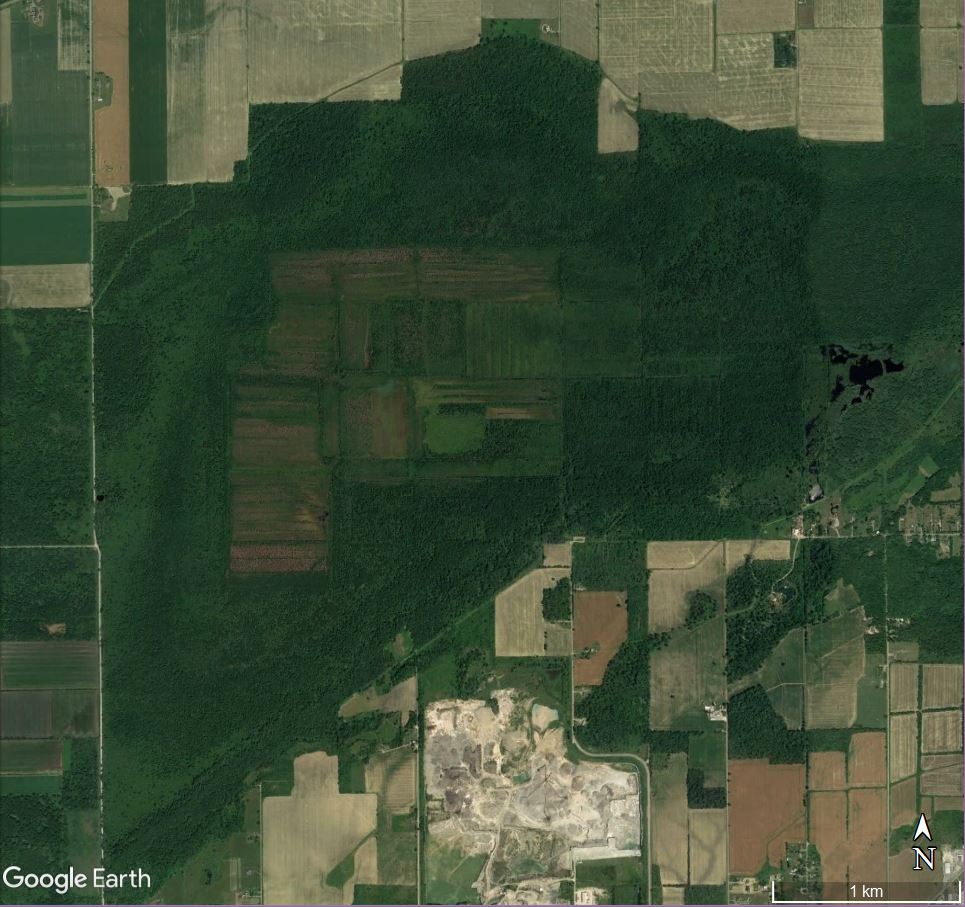
Wainfleet Bog
True bogs are rare in southern Ontario, making this an important habitat for a wide variety of rare species. The bog formed about 5000 years ago as the level of Lake Erie lowered significantly.
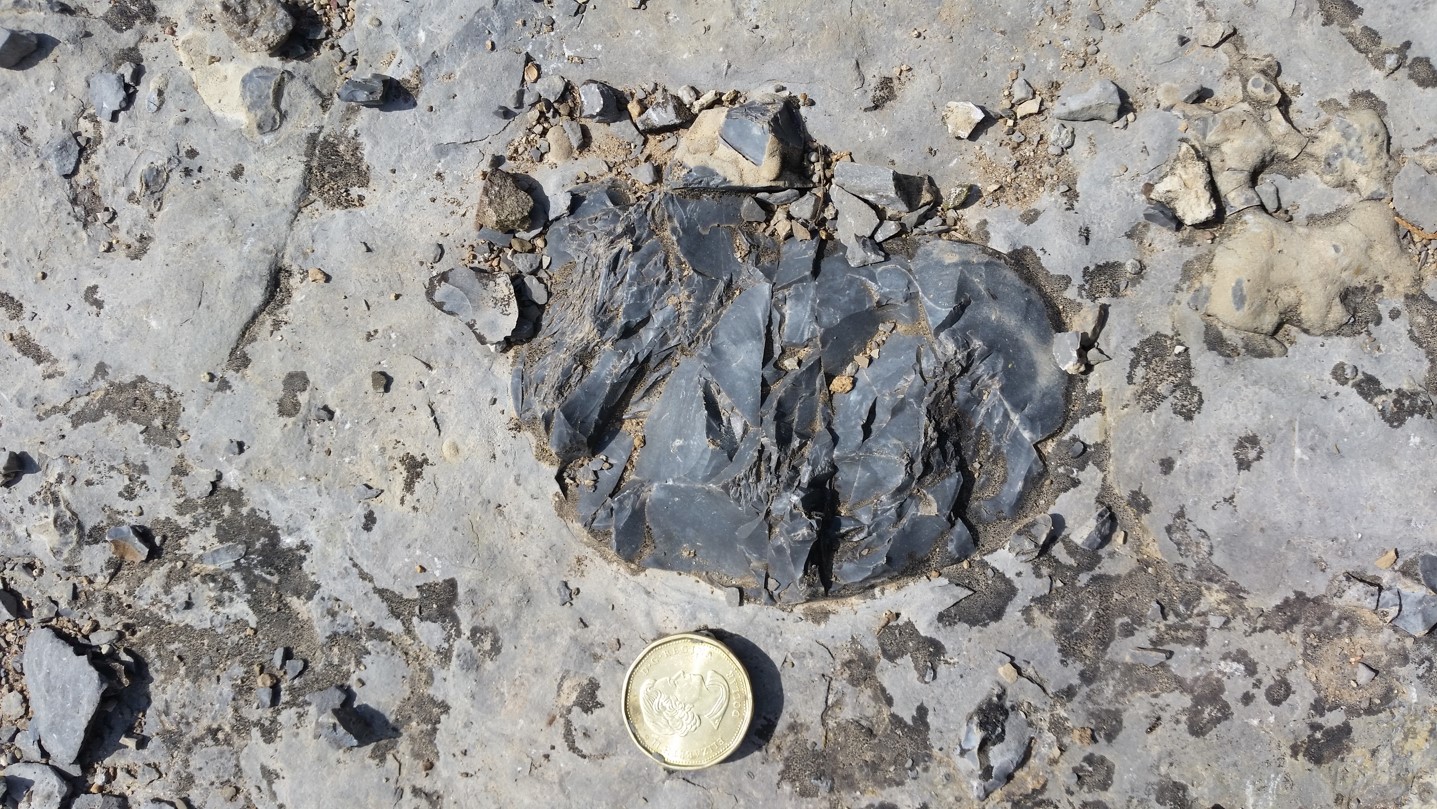
Chert Nodules
Chert, or flint, is a hard silica-rich material that breaks into a sharp point. Knapping chert is the process of shaping a stone into a tool or weapon. Lithic artifacts like stone tools and arrowheads made of Onondaga Chert have been found far away in northern Michigan, probably through trade.

Where am I?
You are at the 'Bog' site at the end of Erie Peat Road near Port Colborne, Ontario.
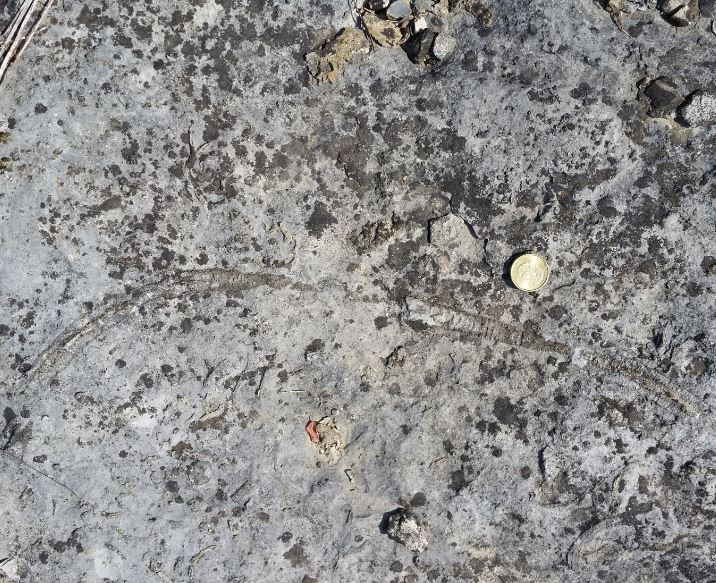
Crinoids
Crinoids, or 'sea lillies' are delicate organisms (echinoderms) with a long stem and arms made out of hundreds of circular plates stacked upon each other. Crinoid stems often break up into isolated cheerio-like plates, sometimes with a star-shaped hole
The Railway
These railway tracks are left behind from the peat harvesting industry that once devastated the Wainfleet Bog.
Bog Biodiversity
The eastern part of the bog has been designated an Area of Natural and Scientific Interest (ANSI). It holds a number of species of interest including a the Mississauga Rattlesnake, the Whip-poor-will bird, Cotton grass, and Labrador tea.
Silurian and Devonian Seaways
The carbonate rocks here were deposited during a period of reduced sedimentation. The Ordovician saw a large influx of clastic sediment wash into the Ontario seaways, but by the Silurian and Devonian the waters had cleared up. Waters were shallow, clear, and warm, allowing coral reefs to thrive. These rocks are about 385 million years old.
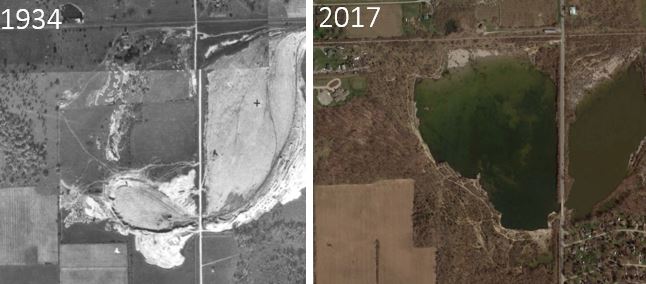
History of the Quarry
This open pit clay and limestone quarry operated from the 1900s until the 1960s. It was purchased by Niagara Peninsula Conservation Authoriy in 1978 and naturalized.
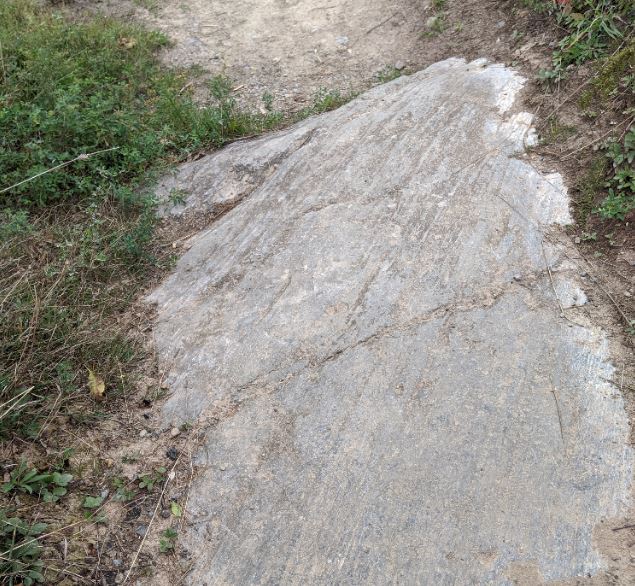
Glacial Striations
These are great examples of glacial striations formed when debris at the bottom of flowing ice scraped the rock surface.
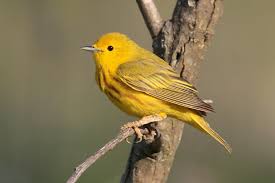
Birds
The wetland is a valuable bird habitat. Yellow Warblers are the most common, and wading and shorebirds are plentiful as are Great Blue Herons, Egrets, Gulls, Terns, and Sandpipers.

Crinoids
Crinoids, or 'sea lillies' are delicate organisms (echinoderms) with a long stem and arms made out of hundreds of circular plates stacked upon each other. Crinoid stems often break up into isolated cheerio-like plates, sometimes with a star-shaped hole

Bioherms
Thicker layers in this wall are bioherms, which are essentially fossilized 'reefs'. Thinner layers are debris washed off the reefs during storms.
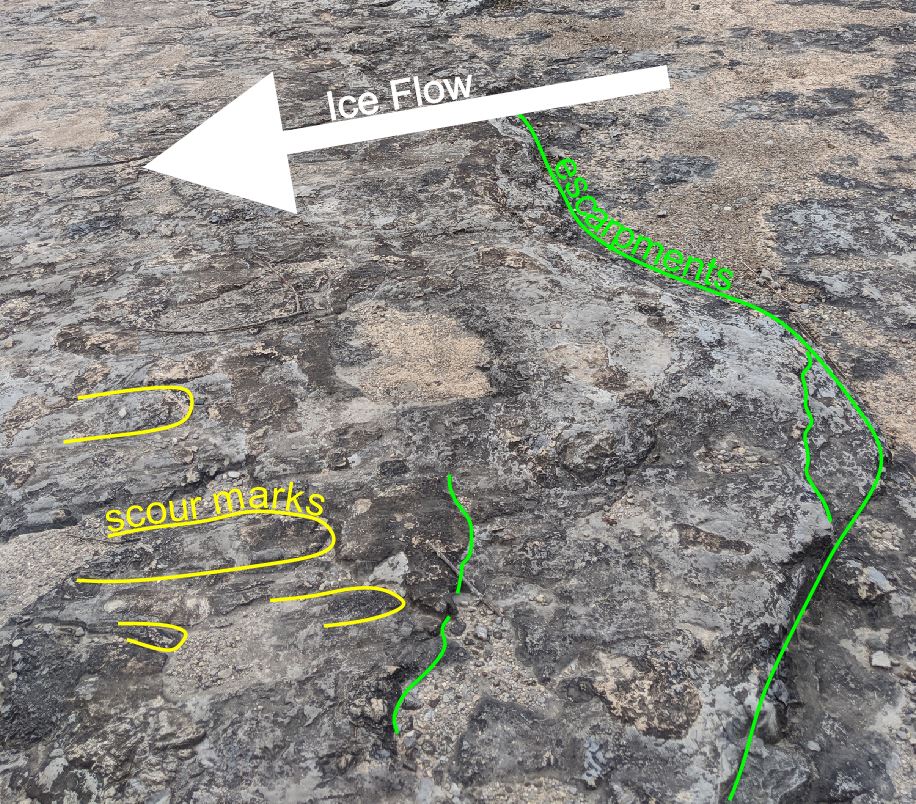
Escarpment Analogy
Southern Ontario has several escarpments: The Niagara Escarpment, The Onondaga Escarpment are nearby examples. This ledge closely mimics the morphology of the escarments and illustrates how they are shaped.

Where am I?
You are at the 'Quarry' site, on the south end of the Wainfleet/Port Colborne Quarry, near the town of Port Colborne, Ontario, Canada.
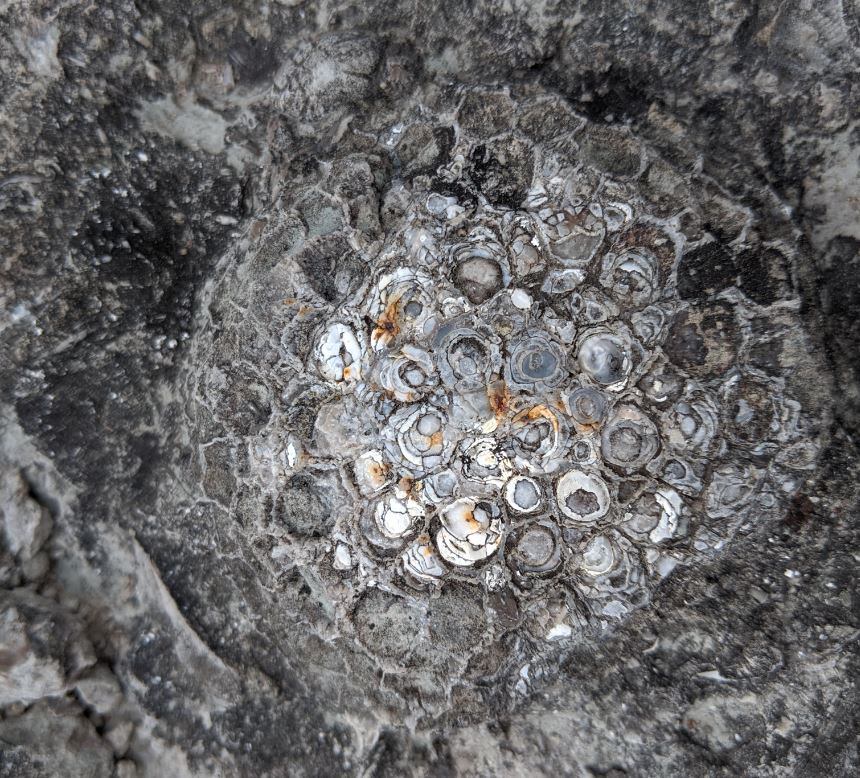
Tabulate Corals
Tabulate corals are a common reef-building fossil in Ontario, and is characterised by it's honeycomb-like appearance. Each hexagonal hole would have held a single polyp (similar to an upside-down jellyfish) so that thousands of polyps would live together in a single colonial structure that grows upwards over time.

Where am I?
You are at the 'Quarry Wall' site, on the north end of the Wainfleet/Port Colborne Quarry, near the town of Port Colborne, Ontario, Canada.
















